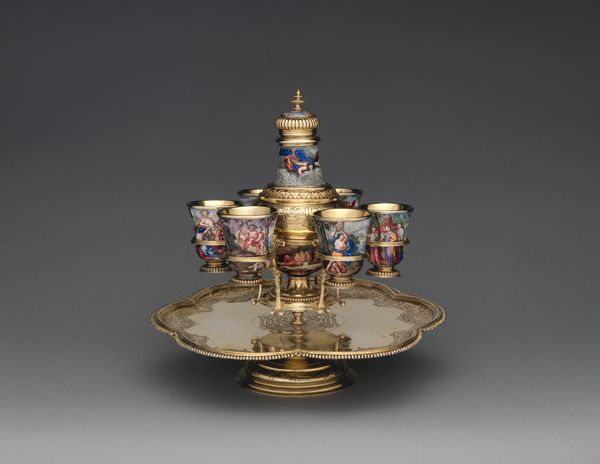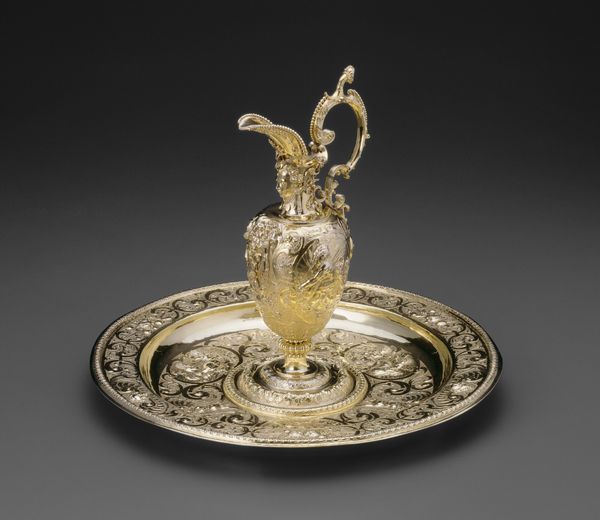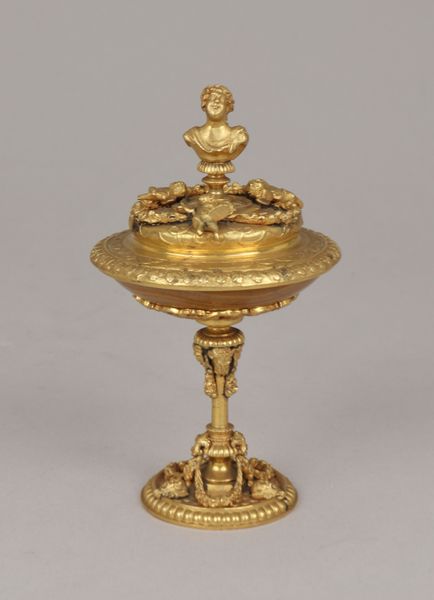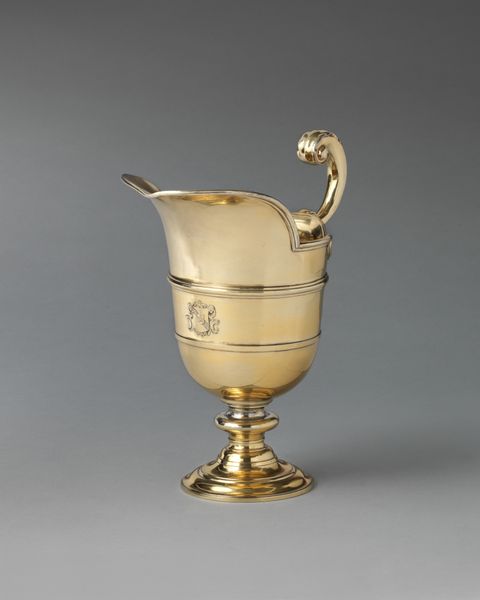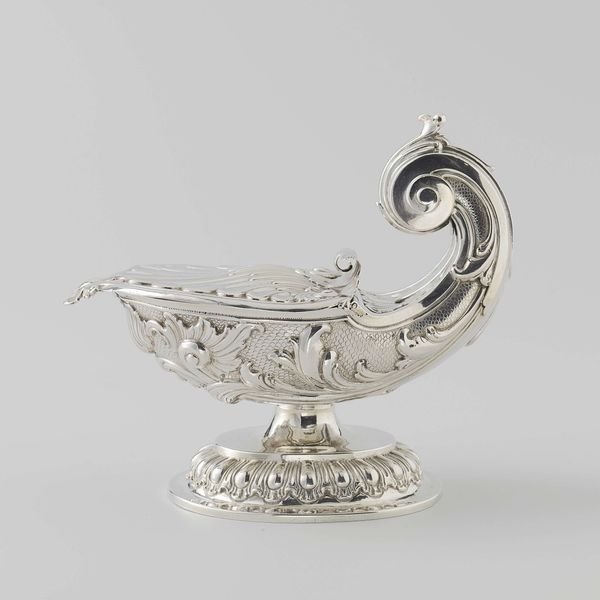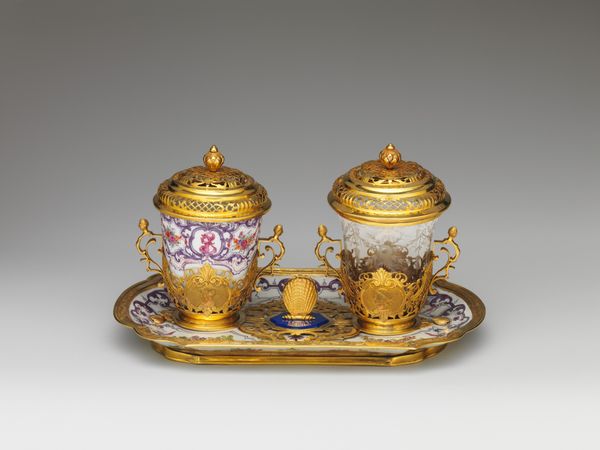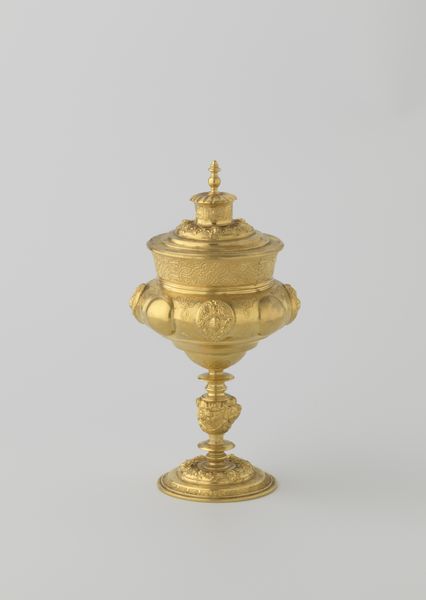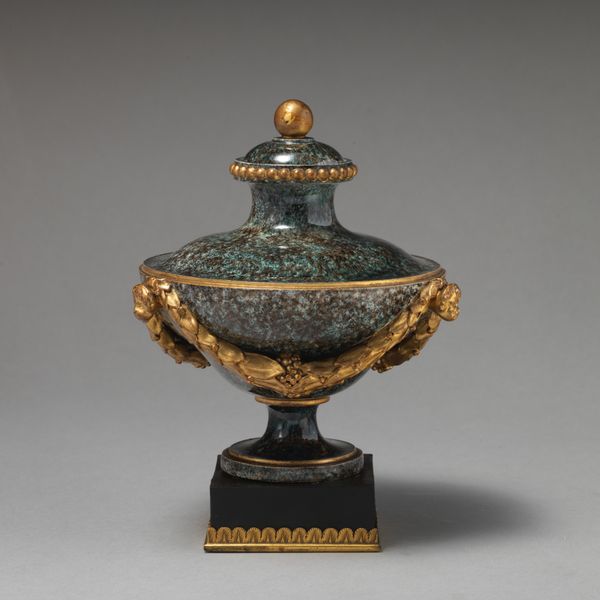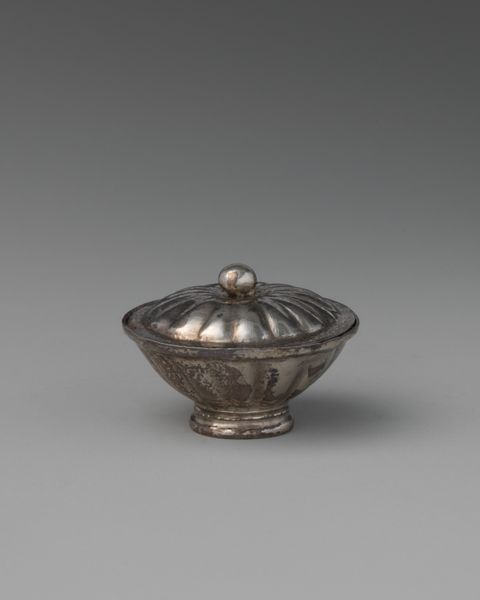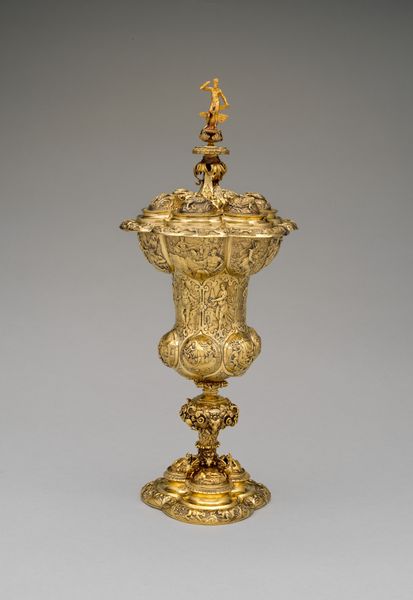
brass, metal, gold, bronze, sculpture
#
brass
#
metal
#
gold
#
bronze
#
sculpture
#
decorative-art
Dimensions: Height: 3 3/4 in. (9.5 cm)
Copyright: Public Domain
Editor: Here we have a Gilded Brass Taperstand, part of a set, created in 1851. Asprey is the maker, and the piece combines brass, metal, gold and bronze, enhanced with inset green stones. It strikes me as embodying Victorian opulence and maybe hints at the growing wealth of the industrial revolution. What historical factors shaped this level of detailed luxury? Curator: It's fascinating to view this taperstand, not just as a decorative object, but as a material artifact deeply entwined with 19th-century social and economic transformations. How do you think the rise of industrial capitalism and its uneven distribution of wealth influenced the aesthetics and function of objects like these? Editor: That's a really interesting question. I suppose the creation of luxury items served the purpose of making class distinctions visible? Curator: Precisely! Consider this: the Victorian era was a period defined by stark social hierarchies and imperial expansion. These elaborate items served as visible symbols of status, and power in a society marked by vast disparities in wealth. How might the taperstand also embody cultural anxieties related to gender and domesticity? Editor: I see what you mean! With a decorative function only, and crafted by men for wealthy households, could this represent a certain construction of ideal womanhood? A lady of leisure, perhaps, illuminating her parlour with a delicate, ornate item. Curator: Exactly. And think of the exploitation of labor and resources from colonized lands required to produce such opulence. What contradictions do you see when viewing beauty in such pieces, recognizing its complex entanglement with systems of oppression? Editor: So, even a seemingly innocuous object like a taperstand prompts crucial conversations about wealth, class, gender, and colonialism, and asks us to consider beauty within ethical frameworks. I hadn't really thought about it that way before. Curator: That's precisely why situating these pieces in their time— and our own time— brings history to life. It's about recognizing these layers and asking ourselves who benefited and at what cost.
Comments
No comments
Be the first to comment and join the conversation on the ultimate creative platform.
